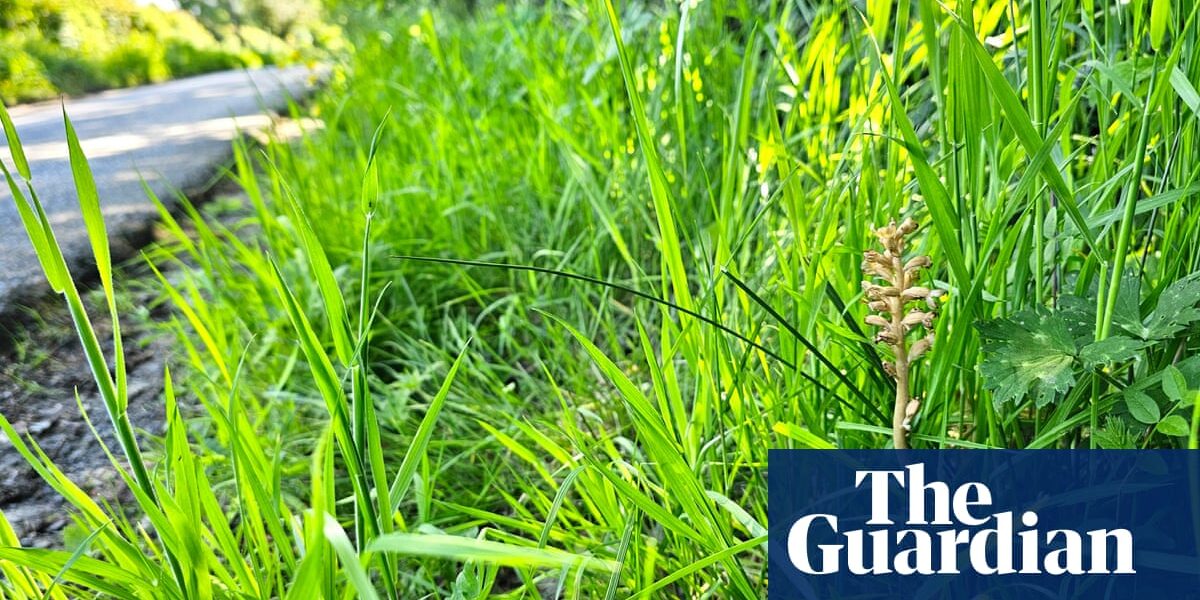
This narrow lane is a busy cut-through and we often have to stand to one side because of the traffic. Between the passing places the verges are uncut, and their flowers have grown tall after spring’s heavy rainfall. Either side is hedged and the more interesting flora is in the north‑facing verge, separated from a narrow band of woodland by a deep ditch. The trees are mainly Scots pine and beech, from which a chaffinch calls insistently on this sunny morning.
The flowers of wood avens shine a deep lemon yellow, their stems arching over freshly green grasses. There’s a delicate tracery of leaves from herb robert, dandelions going to seed and the clear white stars of stitchwort. Clambering stems of bush vetch entwine with emerging brambles; the petals of this common legume are a dirty purple, a smudgy colour that is hard to define. Bright meadow buttercups stand tall and, later on, there’ll be meadowsweet and knapweed.
Other wildflowers like this shady spot: honeysuckle, woodruff, nettles and nipplewort. So much to notice in just a few paces – but then we see it, illuminated in a patch of dappled light: a bird’s nest orchid growing perilously close to the road. This curious plant, nationally and locally rare, has a pale beige colouring that makes it easy to overlook as dead or dying.
Named for its nest-like tangle of roots, Neottia nidus-avis has clusters of dull brown hooded flowers. Being parasitic on the mycorrhizal fungi associated with tree roots, it has no need for leaves or chlorophyll. It often gains its nutrients from beech trees – and there on the other side of the hedge is a large beech whose roots run under the verge. The orchid’s more usual habitat is the deep leaf litter and shade that we can glimpse through the hedge.
That mass of nest-like roots stores food, building up energy over a decade until the orchid blooms, which is why its appearance is such an event. We’d heard about it from a keen-eyed friend who notified the county recorder for South Northumberland. It joins the scattering of Tyne Valley records held by the Botanical Society of Britain and Ireland. And it’s something that couldn’t have happened if the road verge had been cut.
Source: theguardian.com



